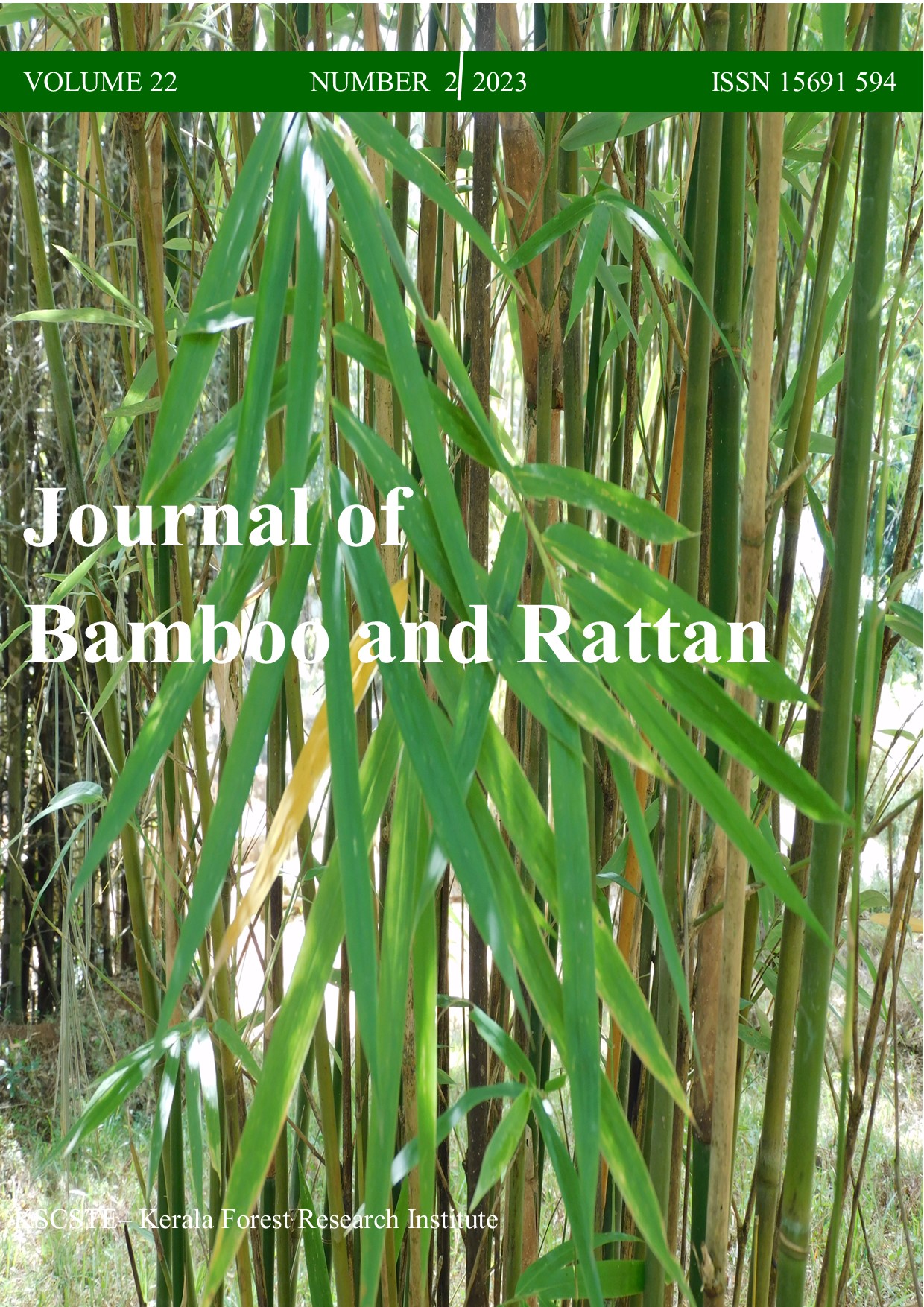Social and economic importance of new bamboo species established in three municipalities of the North Eastern Mountain range of Puebla, Mexico
DOI:
https://doi.org/10.55899/09734449/jbr022202Keywords:
Bambusa oldhamii, Guadua angustifolia, production systems, producersAbstract
The study was conducted in three municipalities of Puebia, Mexico. The objectives were to identify the species of bamboo in the North Eastern region of Puebla, know the climatic conditions and agronomic systems where it grows, characterize the socioeconomic situation of the producers, and identify the contribution to the family economy. A review of the history of cultivation in Mexico was carried out at the National Herbarium of Mexico (MEXU). For the collection of information, it was considered that the bamboo system was within the local agricultural system and selection of municipalities was based on the productive relationship of the crop and the introduction of species in the area. Sixty-four surveys were done of bamboo producers through the questionnaire with social, economic, and productive variables related to the bamboo production system. In the Puebla’s North Eastern Mountain range there are two new species of bamboo, Bambusa oldhamii and Guadua angustifolia, both with different characteristics of uses and established in two production systems, the commercial and family system. At present they have a low commercialization of some bamboo derivatives and little use as food. The region is considered one of extreme proverty. The two species have a high potential for environmental adaptation agronomically they are developed as a single crop in backyards and used in various commercial activities. The lack of use of the crop in the region and its rapid natural expansion due to the environmental conditions for its growth, induces the tendency to consider it as an undesirable plant
Published
Versions
- 30-05-2025 (2)
- 30-05-2025 (1)
Issue
Section
License
Copyright (c) 2024 Journal of Bamboo and Rattan

This work is licensed under a Creative Commons Attribution-NonCommercial-ShareAlike 4.0 International License.
How to Cite
Similar Articles
- G. E Pereira, K. L. Santos, D. C. Ortiz, M. P. Guerra, L. R. Topanotti, Potential bamboo species for cultivation in the southern plateau of Atlantic Forest, Brazil , Journal of Bamboo and Rattan: Vol. 23 (2024): Issue 4
- Gaddam Sudharshan Reddy, M. V. Durai, Guadua angustifolia Kunth: Effect of age on growth, culm morphology, and biomass production , Journal of Bamboo and Rattan: Vol. 23 (2024): Issue 3
- F.W. Owusu, S.L. Tekpetey, E. Appiah-Kubi, C. Essien, J.K. Appiah, F. Boakye, Ripping and planing characteristics of some exotic bamboo species grown in Ghana , Journal of Bamboo and Rattan: Vol. 13 (2014): Issue 3 & 4
- E. Appiah-Kubi, F.W. Owusu, S. L. Tekpetey, C. Essien, H. Seidu , Investigating the mechanical properties of some bamboo species for efficient utilization in Ghana , Journal of Bamboo and Rattan: Vol. 13 (2014): Issue 3 & 4
- T. Peprah, C. Essien, K. Owusu-Afriyie, E. G. Foli, J. Govina , A. A. Oteng-Amoako, Exploring the use of bamboo for accelerated reclamation of degraded mined sites in Ghana , Journal of Bamboo and Rattan: Vol. 13 (2014): Issue 3 & 4
- Jithu Unni Krishnan, Prabhat Kumar, Sreekumar V.B., Surya Narayanan G.K., Bheemalingappa M., In-Vitro Assessment of Host Suitability of Thirty-One Bamboo Species to the Invasive Polyphagous Pest Spodoptera frugiperda (J.E. Smith) (Lepidoptera: Noctuidae) , Journal of Bamboo and Rattan: Vol. 23 (2024): Issue 4
- Abraham Ayamga-Annia, Jonny Osei Kofi, Charles Antwi Boasiako, Investigation of the bond between bamboo and ribbed steel reinforcements and the surrounding concrete by pull-out test , Journal of Bamboo and Rattan: Vol. 22 (2023): Issue 4
- Alok Yadav, Sanchili Verma, Rahul Nishad, Kuldeep Chauhan, Bambusa vulgaris blooms along the Eastern plains of Uttar Pradesh , Journal of Bamboo and Rattan: Vol. 22 (2023): Issue 3
- Pranay Bantawa, Ritu Rai, A preliminary report on the flowering patterns and morphological characteristics of Bambusa tulda Roxb. (Poaceae: Bambusoideae): in Kalimpong district of West Bengal, India , Journal of Bamboo and Rattan: Vol. 24 (2025): Issue 1
- Manish Sakhlecha, Samir Bajpai, Rahul Ralegaonkar, Badrinarayan Rath, Rahul Datta, Rebuilding a traditional village house using the carbon footprint approach , Journal of Bamboo and Rattan: Vol. 22 (2023): Issue 2
You may also start an advanced similarity search for this article.

